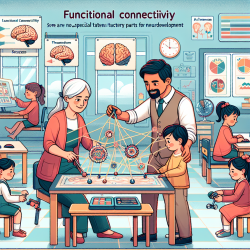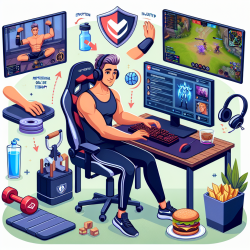Introduction
In the world of special education, understanding the unique needs of children with autism spectrum conditions (ASC) is crucial. A recent study titled "Atypical lateralization of motor circuit functional connectivity in children with autism is associated with motor deficits" sheds light on a significant aspect of autism that often goes unnoticed: motor deficits. This research reveals that atypical lateralization of motor circuit connectivity in children with ASC is linked to motor performance issues, providing valuable insights for educators and therapists.
The Study's Key Findings
The study investigated the lateralization of motor circuit connectivity in children with ASC and its relationship with motor performance. The researchers found that children with ASC exhibited rightward lateralization in motor circuit connectivity compared to typically developing children. This atypical lateralization was associated with poorer performance on motor tasks, assessed using the Physical and Neurological Examination for Subtle Signs (PANESS).
Implications for Practitioners
For practitioners working with children with ASC, these findings emphasize the importance of addressing motor deficits as part of a comprehensive therapeutic approach. Here are some practical steps to consider:
- Incorporate Motor Skills Training: Design interventions that focus on improving motor skills, such as balance, coordination, and fine motor control. Activities like obstacle courses, dance, and yoga can be beneficial.
- Use Technology: Leverage technology, such as virtual reality and online therapy platforms like TinyEYE, to provide engaging and effective motor skills training.
- Collaborate with Specialists: Work closely with occupational therapists and physical therapists to create individualized plans that address the specific motor challenges faced by each child.
- Monitor Progress: Regularly assess motor skills using tools like PANESS to track improvements and adjust interventions as needed.
Encouraging Further Research
While this study provides valuable insights, it also opens the door for further research. Practitioners and researchers are encouraged to explore the following areas:
- Longitudinal Studies: Investigate whether atypical lateralization of motor circuits persists into adolescence and adulthood, and how it relates to other cognitive domains such as language.
- Broader Populations: Examine whether these findings apply to a wider range of individuals with ASC, including those with varying levels of cognitive functioning and different handedness.
- Intervention Efficacy: Conduct studies to evaluate the effectiveness of specific interventions aimed at improving motor skills in children with ASC.
Conclusion
Understanding the link between motor circuit connectivity and motor deficits in children with ASC is a step forward in providing holistic support. By integrating motor skills training into therapeutic practices and encouraging further research, we can help unlock the potential of children with autism, enabling them to thrive in all aspects of life.
To read the original research paper, please follow this link: Atypical lateralization of motor circuit functional connectivity in children with autism is associated with motor deficits.










